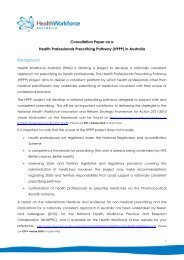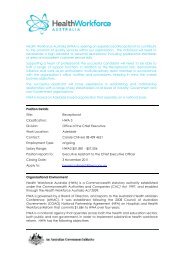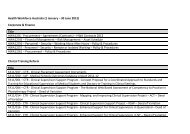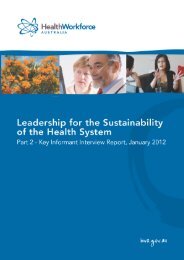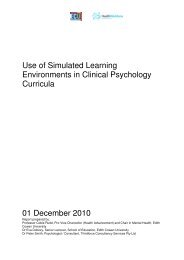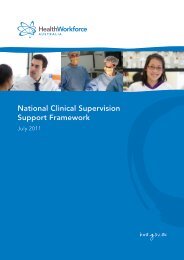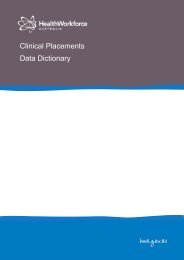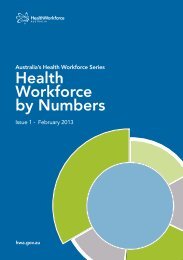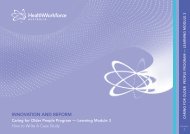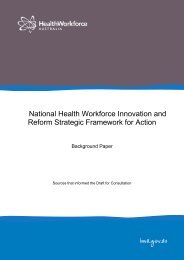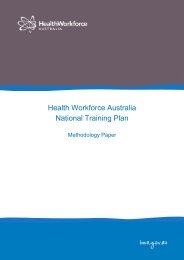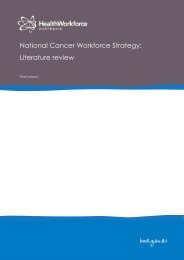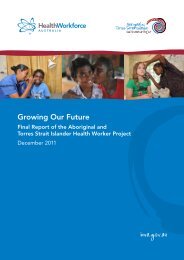SUMMARY - Safe Medications Management project: Key issues and ...
SUMMARY - Safe Medications Management project: Key issues and ...
SUMMARY - Safe Medications Management project: Key issues and ...
Create successful ePaper yourself
Turn your PDF publications into a flip-book with our unique Google optimized e-Paper software.
The Centre for Policy on Ageing (UK) reports <strong>and</strong> tools. London-based <strong>project</strong>s to improvemedication management through a “Single Assessment Process”; <strong>and</strong>The nurse registration board for Irel<strong>and</strong> Comprehensive Guidance to Nurses <strong>and</strong> Midwives onMedication <strong>Management</strong>.The following themes were identified from these overseas documents. However Australian AgedCare services do not collect national data <strong>and</strong> so little is known on actual medication error rates.Medication errors (which can occur at many points from prescription through dispensing,packaging, storage <strong>and</strong> administration) <strong>and</strong> adverse events occur in residential aged carefacilities <strong>and</strong> among the elderly in the community with rates of 20% to 30% (of medicinesadministered) with up to 75% of residents in aged care affected. Errors were highest forpsychotropic, diabetes, <strong>and</strong> anticoagulant medications. Contributing factors included:o complex medication regimes with high numbers of individual drugs prescribed;o prescribing, charting, dispensing, <strong>and</strong> supply errors <strong>and</strong> inconsistencies;o medication information transfer problems where patients moved between settings(home, hospital, residential care);o workload levels <strong>and</strong> interruptions to those administering medications;o inadequate medication monitoring systems;o certain formulations (creams, liquids, aerosols) <strong>and</strong> changes to formulations (crushingtablets, emptying capsules).Strategies identified to reduce errors included:o Dose Administration Aids (although some studies suggest these cause errors),o integrated computerised prescription, order <strong>and</strong> entry (CPOE) systems linking theprescriber, dispenser <strong>and</strong> administrator,o electronic health records (with some qualified support),o pharmacist involvement in medication management systems for both residential <strong>and</strong>community care,o multidisciplinary medication reviews <strong>and</strong> medication management systems,o pharmacist training of direct care staff in aged care medications <strong>and</strong> systems,o medication monitoring systems, <strong>and</strong>o reducing medication management staff workload <strong>and</strong> interruptions.The conclusions that can be drawn from this literature review include:There is no uniformity of guidance on medication management for nurses in aged careamongst the states/territories.APAC guidelines have differing authoritative credibility amongst professionals <strong>and</strong> healthauthorities.Little is known of actual medication error rates in Australian aged care.Multidisciplinary medication review <strong>and</strong> management systems; staff education bypharmacists, CPOE <strong>and</strong> other electronic systems <strong>and</strong> other tools may reduce medicationerrors.21



